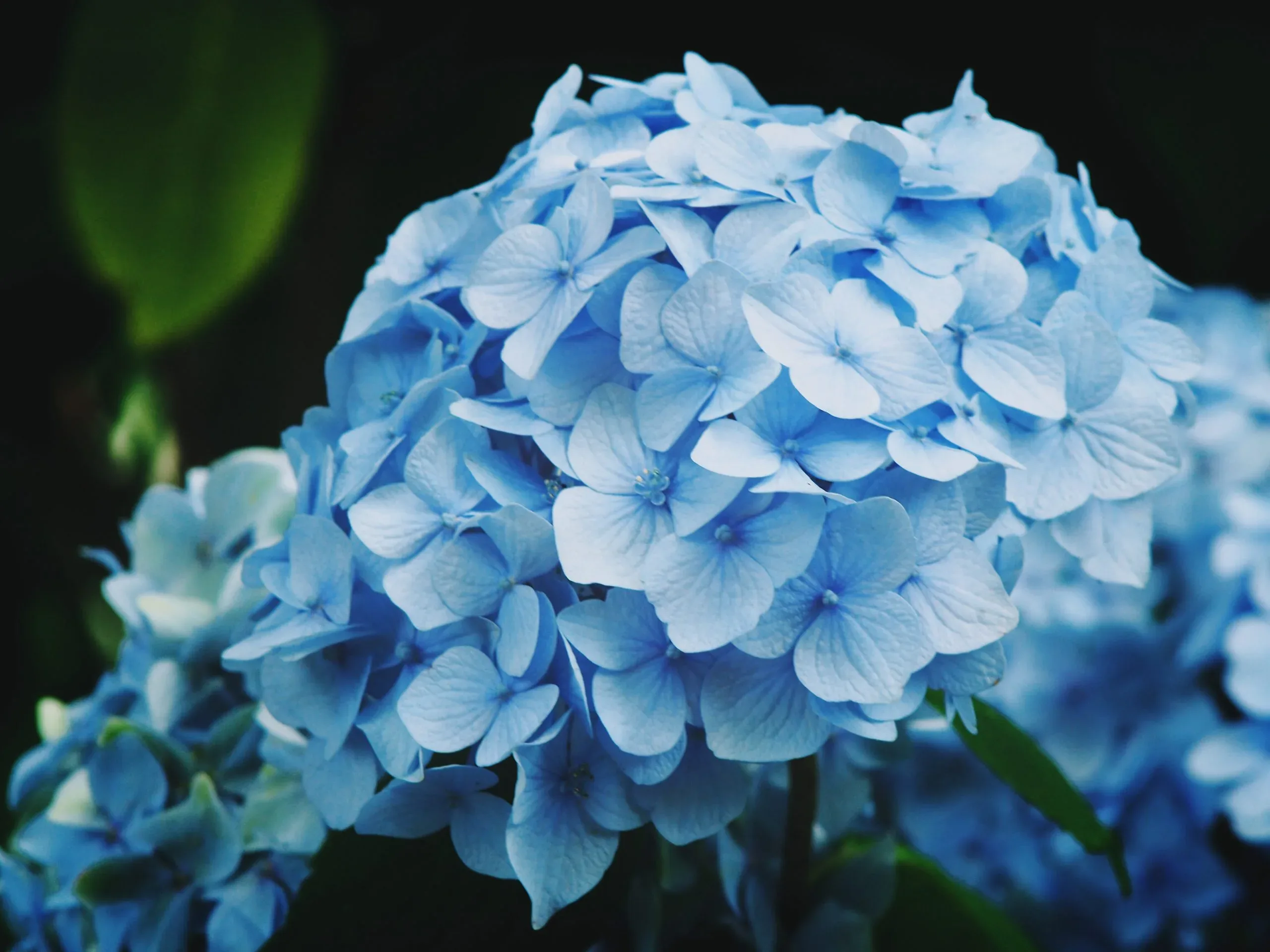
Planting Guides How to Plant Hydrangeas
Hydrangeas are among the most popular plants for shady parts of the garden. They flower late, after many other plants are finished blooming, they last for weeks and weeks in bloom, slowly changing colors and adding variety the garden and best of all they will grow in shady spots where many other plants can fail. They do have some special needs, so let’s look at the best ways to plant them.
There are two main types of hydrangeas. The first and most well-known are the pink, blue or white ‘Mop-Head’ hydrangeas (Hydrangea macrophylla), which have large, rounded flower heads in many shades. The second group are the hardy ‘Annnabelle’ hydrangeas (Hydrangea arborescens), which grow in the coldest regions and have white rounded flower heads. The third group has conical flower heads, usually in white but changing in fall to shades of pink. These are either the hardy ‘P.G.’ hydrangeas (Hydrangea paniculata) or the slightly less hardy ‘Oak-Leaf’ hydrangeas (Hydrangea quercifolia). We will use these terms to identify them when there are differences in their needs.
In a Nutshell
- Remove all packaging
- Water the plant in its pot
- Choose a suitable planting site for the needs of your plant
- Prepare the soil
- Dig a hole the depth of the pot
- Put the plant in its hole and replace most of the soil
- Water well, let the water drain away and put back the rest of the soil
- Put a mulch around your plant and water regularly
Remove your tree from the box
The very first thing to do is un-wrap your trees. Remove all the wrapping materials, remove the trees from the box and remove any wrapping around the trees themselves. Leave the tree in its pot until you are ready to plant.
If you receive your trees in winter – which is a great planting season as long as the ground is not frozen – then of course they will have no leaves on them. That is normal – as soon as spring comes your tree will send out its fresh, new leaves and begin to grow.
Move your plant around by picking up the pot – do not lift it by the trunk or stem.
Care Before Planting Time
Your trees have been on a journey and they will be a little stressed, so place them in a shady part of your garden and give them a good watering. Do not put them in the garage, a shed or in the house, even if it is cold outside. Your tree will live happily in its pots for some time as long as you care for it. Remember to water every day or every second day, depending on how warm the weather is – do not let the pot become dry. If it does become very dry, place it in a bucket and half-fill the bucket with water so that the soil can soak completely.
Choosing a Planting Location
Hydrangeas are usually planted in shady locations, but in fact they will also grow in sunny areas. They grow best in sun in more northern states and they must have good, moist soil, especially for the Annabelle and Mop-Head types. The P.G. and Oak-Leaf hydrangeas will do well in sunnier areas, again if they have enough moisture in summer.
The ideal site is in shade but with blue sky overhead, so in the shadow of a building or trees. Overhead shade from deciduous trees is usually good too, but beneath dense evergreens you will have slower, weaker growth.
If you are planting a Mop-Head hydrangea, remember that for blue colors you need to have acid soil, although the Nikko Blue Hydrangea will stay blue even in neutral soils. Pink Mop-Head hydrangeas do best in neutral or alkaline soils.
Preparing the Planting Site
Good soil preparation is the key to the success of your tree. Hydrangeas do best in soil rich in organic material, well-drained but that does not become completely dry. Whatever your soil is like, use it. Do not try to dig a hole and fill it with soil you bought somewhere else. If your soil is poor, just use extra organic material.
You goal is to make a large area of looser soil that the young roots can penetrate easily, getting food as they go and establishing quickly. You need to have an area at least three times the diameter of the pot, dug as deep as your spade will go. Add plenty of organic material to the soil as you dig. Almost any kind of organic material is good, among the best are well-rotted cow, sheep, or horse manure (if you can obtain them); garden compost; any ‘top-soil’ from a garden centre; or if you have nothing else, peat-moss. A bucket or two per plant is about right. For blue-flowering Mop-Head Hydrangeas only use peat-moss and soil additives for acid-loving plants
In addition, trees need fertilizer to help develop their roots. This can be rock phosphate or bone-meal or any kind of superphosphate. There are many ‘tree planting’ fertilizers available too and they all work well, so whatever is available will be fine. Again, for a blue Mop-Head hydrangea only, use fertilizers for acid-loving plants.
Remove roots of weeds from the area and any stones bigger than your fist. Smaller stones can be left and it is not a good idea to sieve the soil to remove smaller stones they are best left in and can help with drainage.
Turn over the soil, mixing the organic material and fertilizer into it and then level it off and get ready to plant. Save some of the organic material you used to mulch your tree after planting.
Preparing the Plant
The evening before you are going to plant, give the pot a good soaking with water. If the root ball is dry when you plant, it may stay that way and cause your tree to suffer from dryness even if the surrounding soil is damp.
Digging the Hole
Now dig a hole in the exact spot where you want your tree to be, making it twice the diameter of the pot, but only just as deep. If you have dug the soil deeper than that, use your foot to press down the soil in the bottom of the hole, to form a firm base beneath the plant. This is to prevent it from sinking deeper than you want in the hole after you have planted it. In very cold regions, plant Annabelle hydrangeas a couple of inches deeper than they are in the pots, so they can re-sprout in spring more vigorously.
Removing the Pot
Take your tree to the planting hole and slide the pot gently off. You may need to tap the edge a couple of times to release the roots, but it should slide out pretty easily. Usually there will be plenty of roots filling the pot and the root-ball will stay together and not fall apart at all.
If it looks like the soil is going to fall off the roots, don’t worry, that is easily dealt with. If you plant has no leaves, then just let any extra soil fall into the planting hole. If your tree is growing, with green leaves, then leave it in the pot, take a sharp knife and cut around the bottom of the pot and remove the base. Then get someone to hold the pot together while you cut down the side of the pot. Tie a piece of string around it to hold together while you plant.
Planting the Hydrangea
Now place the plant in the centre of your hole, checking that the top of the root-ball is level with the soil around it. Replace about three-quarters of the soil in the hole, pressing it down around the roots of your tree. If you have left the pot on, do the same thing, but when you have finished, cut the string holding the pot together and gently work the cut pot out of the soil. Finish firming down the soil – a gentle foot pressure or firm hand pressure is about right.
Watering the Plant
Now fill the hole with lots of water, letting it soak down into the ground and into the root ball. Use plenty of water and then wait until it has all drained away. This will give plenty of water around the roots, where it is needed.
Finishing the Planting
Now put back the rest of the soil, firming it gently down. Make sure you have only covered the top of the root ball with a very little soil, no more than one inch. Make sure the soil is not sloping away from the tree, but flat, so that when you water it will stay around the tree, not run away. Some gardeners like to make a low wall of soil around the tree, at a spot about twice the diameter of the pot, to retain water. This is a fine thing to do, but not absolutely necessary. Put a layer of organic material over the whole root area, about three inches deep and then water everything thoroughly.
Planting in a Container
Hydrangeas are also easy to grow in pots or planter boxes, since their root-system is not large and they will live well for many years in a large pot. If your soil is alkaline but you are growing a blue Mop-Head hydrangea, then a pot will make it very easy to keep your plant blue.
Make sure the container you choose has drainage holes, this is vital. Use a soil for outdoor planters from your local garden center and choose soil for acid-loving plants for blue Mop-Heads. Make sure your container is large enough for there to be soil beneath and around the root-ball. Water the container thoroughly after planting and then whenever it starts to become a little dry on the top layer.
Once spring comes start feeding with a hydrangea liquid fertilizer regularly according to the directions.
Leave your tree outdoors in the winter; it needs a period of cold weather. If you live in the coldest zone recommended for your tree it is a good idea to bury the pot in a corner of your garden for the winter to protect the roots from becoming too cold.
Follow-up Care of Hydrangeas
Replace the mulch over the roots each spring and never let the soil become completely dry or the leaves will burn.
Hydrangeas need regular pruning. Annabelle hydrangeas should be cut back hard in spring – they flower on new shoots. Mop-Head hydrangeas need a framework of branches, so just remove thin, weak or dead branches in spring and cut the tips back to healthy buds. Oak-Leaf hydrangeas are pruned like regular garden shrubs – remove weak growth in the spring and trim back a little at that time. P.G. hydrangeas should be trimmed back to a framework of older branches, just leaving a couple of inches of the growth from the previous year, once your shrub is a good size. Remove all weak shoots at the same time.
So that is it. Your new Hydrangea is set for a great life and will reward you with greater and greater beauty every year as it develops into a perfect specimen. A little care really pays off.
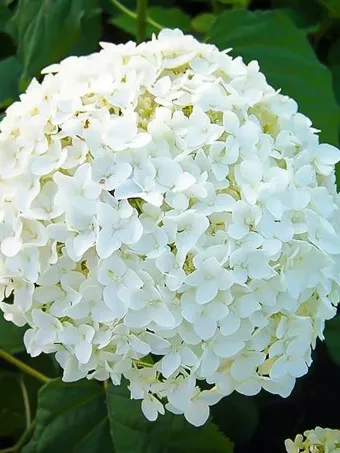
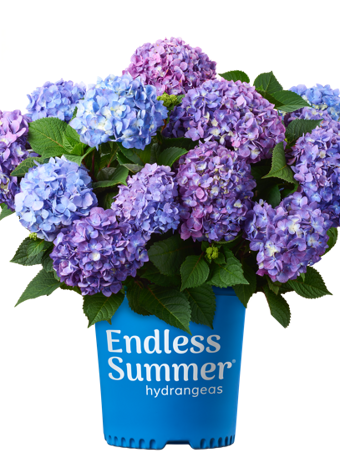
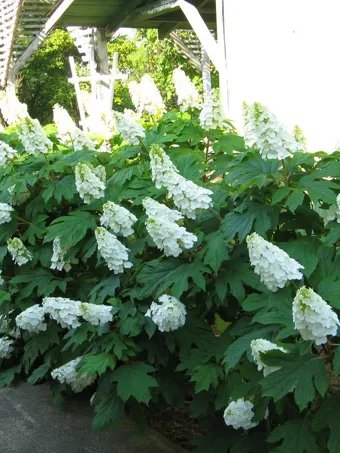
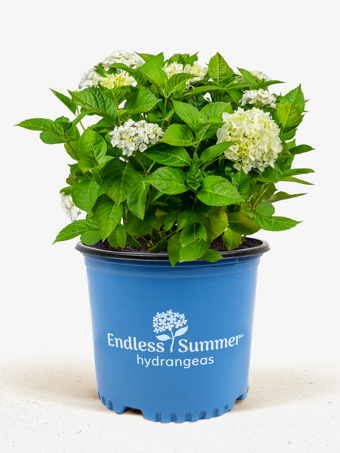
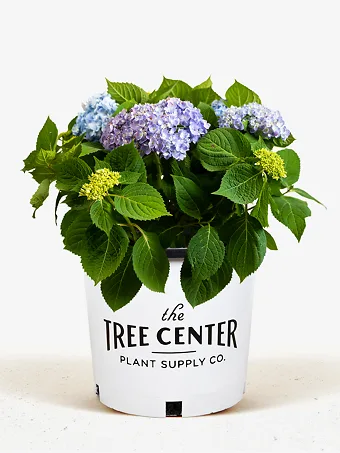
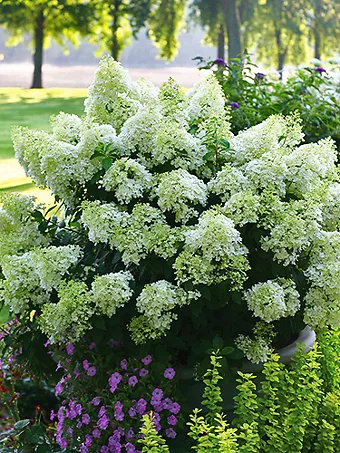
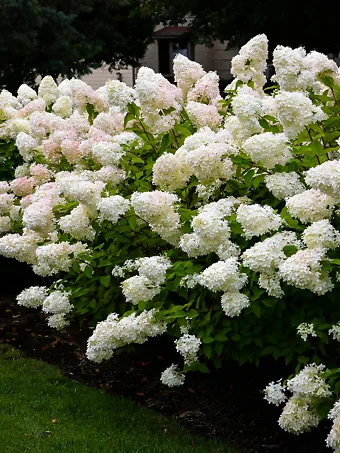
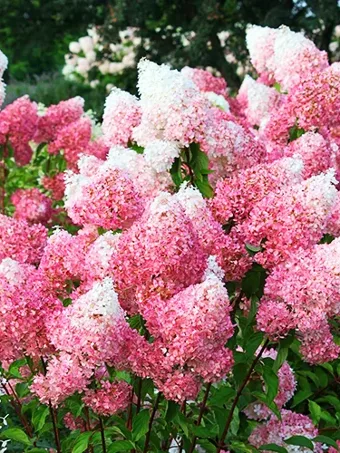
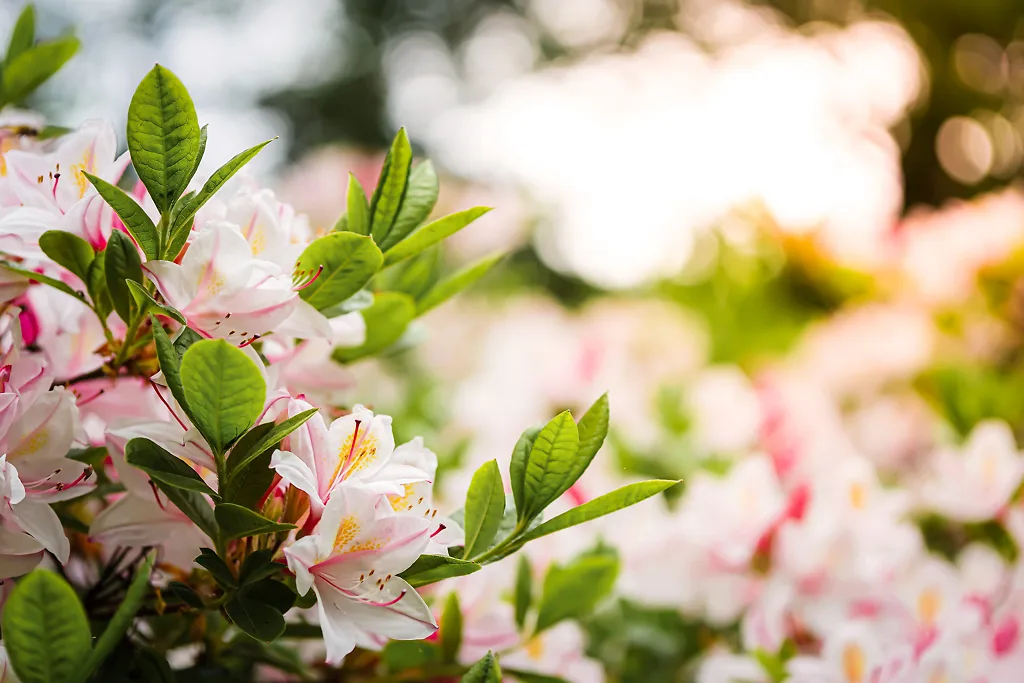
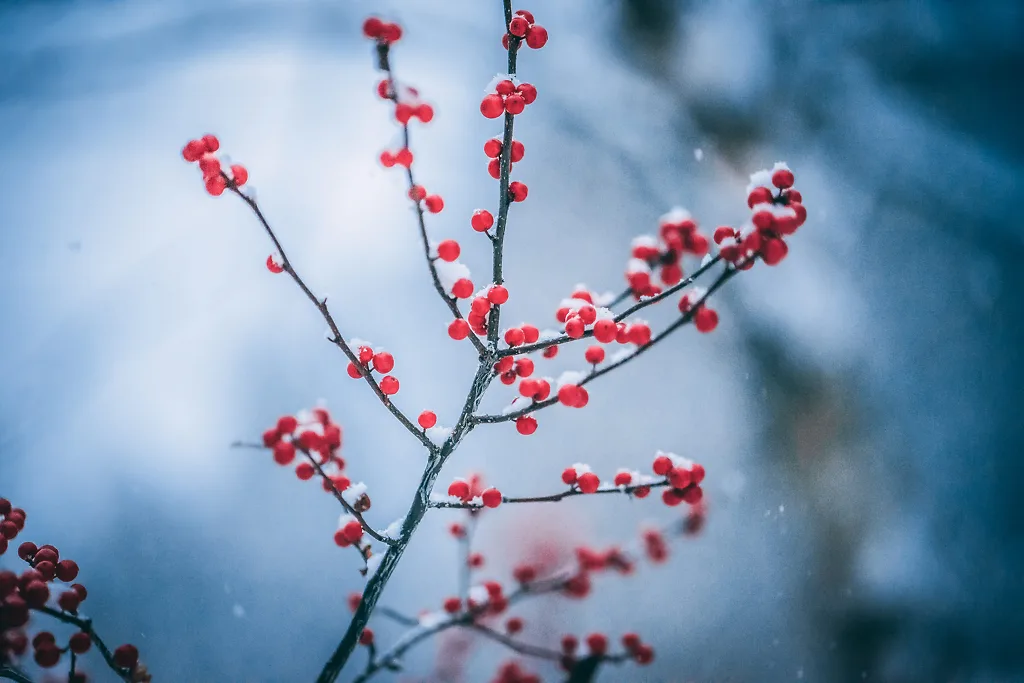






Comments 15 comments
I didn’t see how far apart to plant hydrangeas from one another? I am planning to buy several 1 gallon containers to grow into a hedge.
Do you have knowledge of planting Annabelle hydrangea in zone 9 or subtropical. I need a hydrangea for a birthday present for Jensen Beach, Fl 34957
Do you have them? Do you ship them? What is the right season for them to be planted.
I know oak leaf and paniculata versions are recommended. Do not like them as well.
Thank you very helpful, look forward to my plant coming.
How far apart do I plant your ‘Limelight’ hydrangeas to create a hedge?
How far apart should the one gallon plants be? I have one are 12’ wide and a second 17’ wide
I trimmed my PG hydrangea last fall. I had no flowers this year. What did I do wrong?
i bought the vanilla strawberry hydrangea last year and planted it according to your directions. i noticed yestarday that my husband had cut all the branches back to nothing. will this hurt this plant? you can email me my answer.
angela morris
How far apart?
How far apart?
Which specific type should I buy for Houston, Texas, zone 9?
I just purchased and planted the cardinal hydrangeas. I live in eastern Tennessee and soil is clay-like. I planted it in a full sun location. I used Miracle-Gro Miracid. Will it bloom this season? Other than watering, what else do I need to do?
What about planting climbing hydrangeas?
My azaleas and lime light hydrangea died over the winter. The three plants did not rebloom this year. I would like to know if I am entitled to replacements?
I have two white snow ball hydrangeas in my front yard and they are legging. I plan to cut them back this weekend. The ground was recently mulched, Is there anything else I should do to ensure continued growth?
Thank you.
how far apart do you plant hydrangea